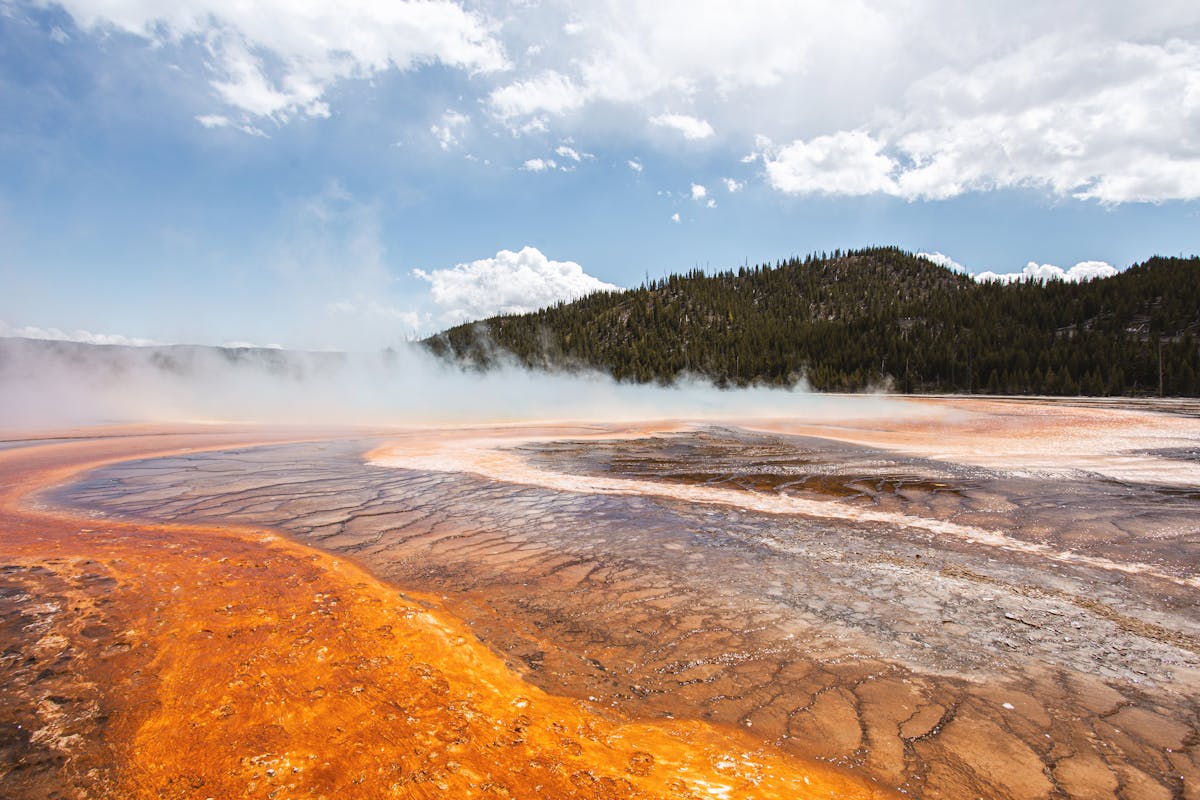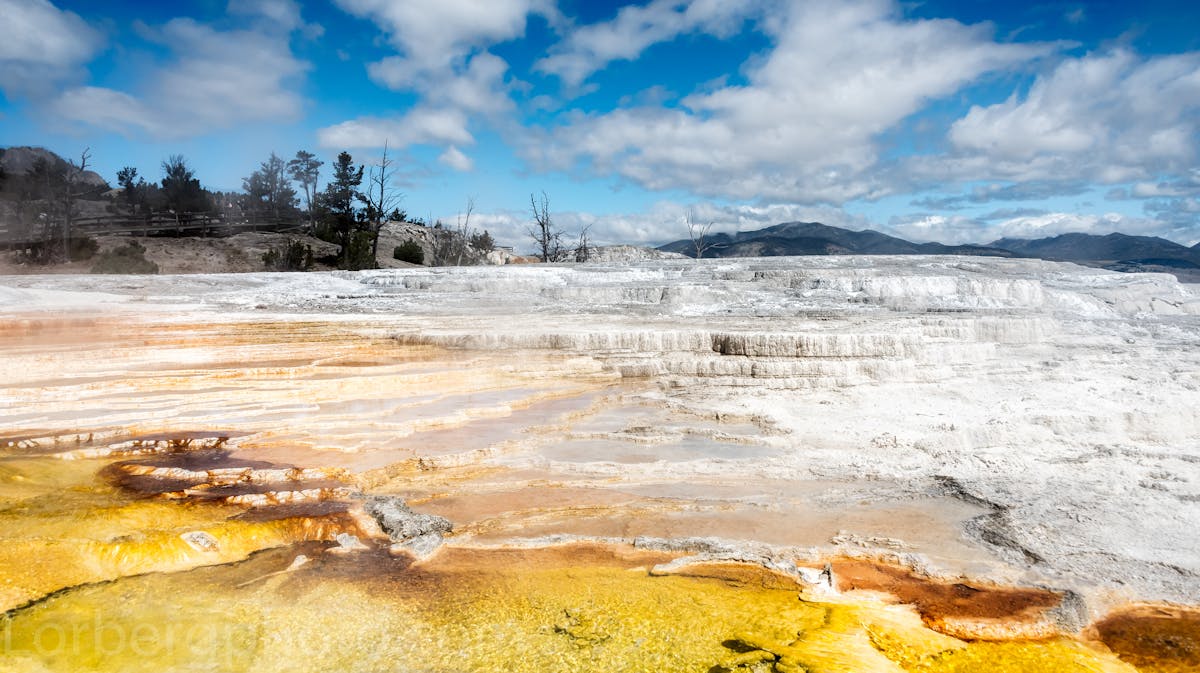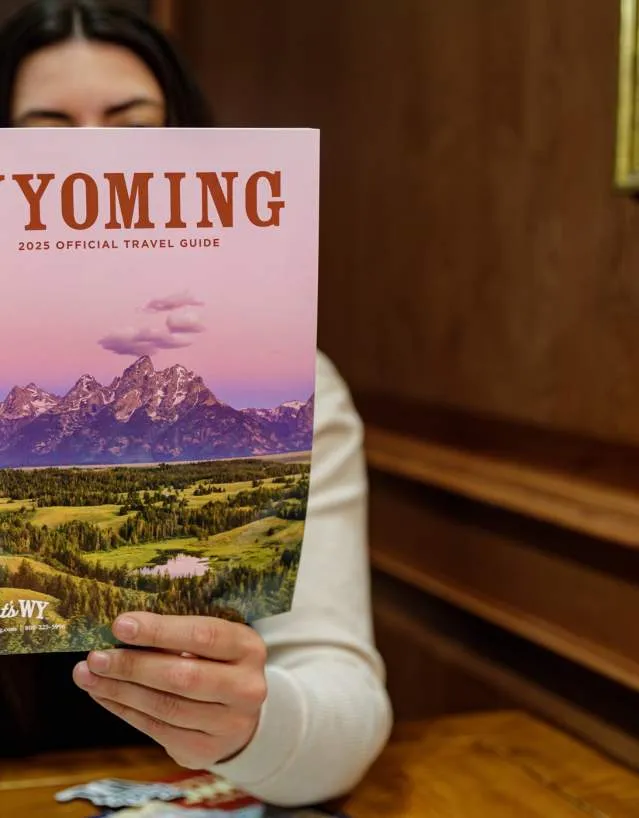Welcome to the definitive Wyoming Tourism Guide, crafted for adventurers and culture enthusiasts seeking an unforgettable journey into the American West. The United States is vast, but few places capture the spirit of freedom and raw natural beauty quite like Wyoming. It’s a land where the horizon stretches forever and the call of the wild is ever-present, inviting you to escape the mundane and embrace the extraordinary.
This guide is designed to help you navigate Wyoming’s diverse landscapes and experiences, from the iconic peaks of the Tetons to the geothermal wonders of Yellowstone, delving into its rich history, unique culture, and surprising culinary scene. Get ready to plan your adventure and discover why Wyoming truly is where the West begins.
Why Choose Wyoming for Your Next Adventure?
Wyoming offers an escape unlike any other. It’s a place where vast open spaces dominate, providing solitude and breathtaking scenery. The state boasts two of the most famous National Parks in the world, alongside countless state parks, national forests, and wilderness areas. Whether you’re an avid hiker, a wildlife photographer, a history buff, or simply seeking tranquility, Wyoming caters to a wide range of interests.

The state’s relatively low population means you can often find yourself immersed in nature without the crowds, offering a more authentic and personal connection to the landscape. This Wyoming Tourism Guide aims to unlock these experiences for you.
Iconic National Parks in Wyoming
No Wyoming Tourism Guide would be complete without highlighting its crown jewels: Yellowstone and Grand Teton National Parks. These parks showcase dramatically different but equally stunning aspects of Wyoming’s natural beauty. Planning your visit to these areas requires some foresight, especially during peak seasons.
Yellowstone National Park, the world’s first national park, is famous for its geothermal features like Old Faithful, vibrant hot springs, and diverse wildlife including bison, elk, wolves, and bears. Exploring Yellowstone can take days, with miles of trails, scenic drives, and visitor centers offering insights into its unique geology and ecology.
Fun Things to Do in Kissimmee Florida
Where To Go In Waikiki – Your Ultimate Guide to Hawaii’s Iconic Beachfront
The Best Things to Do in Naples – Your Ultimate Italian Experience
Just south of Yellowstone lies Grand Teton National Park, home to the jagged, awe-inspiring Teton Range rising dramatically from the valley floor. This park is a paradise for hikers, climbers, and photographers. Jenny Lake and Jackson Lake offer stunning views and opportunities for boating and fishing, while trails range from easy strolls around lakes to challenging climbs into the mountains.
Unforgettable Outdoor Activities
Wyoming’s landscape is an outdoor playground. Beyond the national parks, opportunities for adventure abound. This Wyoming Tourism Guide encourages you to step outside and explore. Hiking trails crisscross the state, offering routes through forests, mountains, and high deserts. Backpacking allows for multi-day immersion in the wilderness.
Fishing is a popular pastime, with pristine rivers and lakes teeming with trout. The Snake River in the Jackson Hole area is particularly famous for fly fishing. For those seeking adrenaline, rock climbing, mountaineering, and white-water rafting are readily available in areas like the Wind River Range or the Snake River Canyon.
Winter transforms Wyoming into a snowy wonderland. Skiing and snowboarding are major attractions, with world-class resorts like Jackson Hole Mountain Resort and smaller, community-focused hills. Snowshoeing, cross-country skiing, and snowmobiling offer alternative ways to experience the serene winter landscape.
Delving into Wyoming’s Rich History and Culture
Wyoming’s history is deeply rooted in the narratives of Native Americans, explorers, cowboys, and pioneers. The state was a crucial part of the American Westward Expansion, traversed by the Oregon Trail, California Trail, and Mormon Trail. Learning about this past enriches any visit, and this Wyoming Tourism Guide touches upon these layers.

You can visit historic sites like Fort Laramie National Historic Site, a key 19th-century fur trading post and military fort. Explore the legacies of the Bozeman Trail conflicts or the stories of the early railroads that crisscrossed the state. Museums across Wyoming, like the Buffalo Bill Center of the West in Cody, offer fascinating collections on the Old West, Native American cultures, firearms, and natural history.
Wyoming’s contemporary culture still holds strong ties to its cowboy heritage. Rodeo is a significant part of the state’s identity, with Cheyenne Frontier Days being one of the largest and most famous rodeo events in the world. Visiting a local rodeo or attending a dude ranch provides a glimpse into this enduring way of life.
A Taste of Wyoming: Culinary Exploration
Wyoming’s cuisine reflects its landscape and history, focusing heavily on hearty, locally sourced ingredients. While not as widely known for its food scene as some states, a culinary exploration is a vital part of any Wyoming Tourism Guide. The state is renowned for its beef, and tasting a perfectly grilled steak is a must-do experience.
Bison is another local staple, often found on menus in burgers, steaks, or stews. Don’t miss the chance to try a bison burger, a lean and flavorful alternative to beef. Many restaurants emphasize ranch-to-table dining, showcasing the quality of Wyoming’s agricultural products.
In smaller towns, you’ll find classic American diners serving up comfort food. For a truly Western experience, look for chuckwagon dinners, often offered at dude ranches or special events, providing a taste of what pioneers and cowboys might have eaten on the trail. Local breweries and distilleries are also growing, offering unique craft beverages often inspired by the surrounding nature.
Planning Your Wyoming Trip
Effective planning is key to maximizing your experience in Wyoming. This Wyoming Tourism Guide provides some essential tips.
Best Time to Visit: Summer (June to August) offers the warmest weather and full access to parks and outdoor activities, but also the largest crowds. Spring and Fall provide beautiful scenery, fewer visitors, and pleasant temperatures, though some higher elevation areas or roads might still be closed (spring) or subject to early snow (fall). Winter is ideal for snow sports and experiencing the parks in a serene, snowy state.
Getting Around: A car is essential for exploring Wyoming’s vast distances and remote areas. Major airports are located in Jackson (JAC), Cody (COD), Casper (CPR), and Cheyenne (CYS). Renting a vehicle, ideally one suited for varying conditions, is highly recommended.
Lodging: Options range from luxury resorts and historic lodges (like those in the national parks) to cozy cabins, vacation rentals, budget-friendly motels, and abundant camping opportunities. Dude ranches offer an all-inclusive Western experience. Book accommodations well in advance, especially during peak season.
Essential Tips for Travelers
Prepare for varying weather conditions, as temperatures can fluctuate significantly, even within a single day. Layering clothing is advisable. Stay hydrated, especially at higher elevations. Be aware of wildlife and maintain a safe distance; never feed animals.
Cell service can be spotty in remote areas, so download maps and necessary information beforehand. Respect the natural environment by staying on marked trails and following Leave No Trace principles. This Wyoming Tourism Guide encourages responsible tourism.
Consider purchasing a national parks pass if you plan to visit multiple parks. For specific interests like fishing or hunting, ensure you have the necessary licenses. Local visitor centers are excellent resources for current conditions, trail information, and expert advice.
 Person holding and reading the official printed Travel Guide
Person holding and reading the official printed Travel Guide
Beyond the Highlights: Discovering Hidden Gems
While the famous parks draw millions, Wyoming is full of less-crowded treasures. Explore the Bighorn Mountains, a rugged range offering hiking, camping, and scenic drives like the Cloud Peak Skyway. Visit Vedauwoo Recreation Area near Laramie for unique rock formations popular with climbers.
The Flaming Gorge National Recreation Area, straddling the Wyoming-Utah border, is a haven for boating, fishing, and stunning red rock canyon views. The Wind River Range offers challenging wilderness experiences and pristine alpine lakes. Don’t overlook the charm of small towns like Sheridan, Cody, and Lander, each with its own history and local flavor.
This comprehensive Wyoming Tourism Guide aims to inspire your journey, whether you stick to the well-trodden paths or venture off the beaten track.
Conclusion: Your Wyoming Adventure Awaits
Wyoming is a destination that captivates the soul with its immense landscapes, rich history, and authentic Western spirit. It offers a chance to reconnect with nature, challenge yourself with outdoor pursuits, and immerse yourself in a unique American culture.
Using this Wyoming Tourism Guide, you have a starting point for planning a trip filled with exploration and unforgettable experiences. From the geysers of Yellowstone to the peaks of the Tetons, the historic trails, and the welcoming towns, Wyoming promises an adventure that stays with you long after you leave. Start planning today and experience the wild heart of the West!
Frequently Asked Questions About Visiting Wyoming
Q: What is the best time of year to visit Wyoming?
A: The best time depends on your interests. Summer (June-August) is popular for warm weather and full access to parks and activities. Spring and Fall offer fewer crowds and beautiful scenery. Winter is ideal for snow sports.
Q: Do I need a car to travel around Wyoming?
A: Yes, a car is highly recommended for exploring Wyoming due to the vast distances between attractions and limited public transportation options outside of major towns.
Q: What wildlife can I expect to see in Wyoming?
A: Wyoming is home to abundant wildlife including bison, elk, deer, pronghorn, bears (black and grizzly), wolves, moose, and numerous bird species. National parks and wilderness areas are prime viewing locations.
Q: Are there options for dining in Wyoming?
A: Yes, dining options range from steakhouses and diners specializing in local meats like beef and bison to cafes, breweries, and restaurants in towns near major attractions.
Q: Is it easy to find lodging in Wyoming?
A: Lodging is available in various forms, including hotels, motels, resorts, cabins, vacation rentals, dude ranches, and campgrounds. Booking in advance is strongly advised, especially during the summer peak season.
